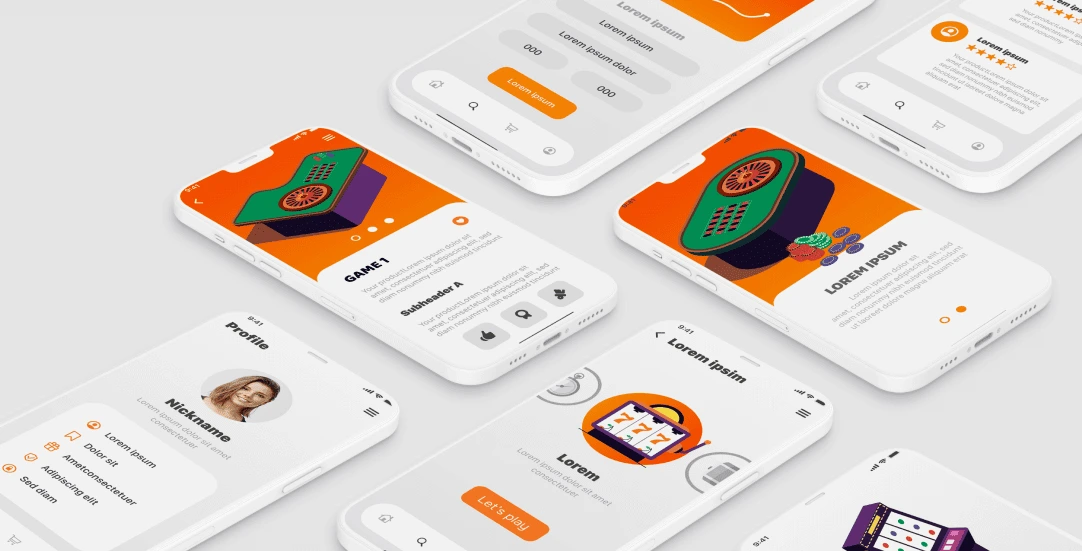UX – the key to success in iGaming

User Experience (UX) has emerged as a hot talking point in the iGaming realm, building up a fascinating history over the years. While the concept originated around the 1970s, a significant nod to its relevance came when Don Norman coined the term ‘User Experience Architect’ for his role at Apple in 1993. Fast-forward to today, and the importance of UX has only increased in significance. At its core, UX design’s goal remains largely unchanged: delivering an impactful, holistic experience to users through a product or service.
The importance of UX
In an industry teeming with fierce competition, what helps a brand rise above the rest? It’s no longer sufficient to top search engine result pages. Sure, online visibility is a significant factor, but it’s equally critical to design your digital journey to showcase your brand optimally. Nowadays, IT engineers go beyond structuring and aesthetics. They sculpt the entire ‘usability’ spectrum, crafting ‘user experiences’ from the ground up. In essence, they’re the architects of a brand’s future success and market dominance. A positive UX can profoundly influence a platform’s quality, even evoking a sense of awe in the users.
Elements of effective UX in iGaming
In iGaming, UX is not just about aesthetics—it directly impacts user satisfaction and revenue generation. A smooth onboarding process, intuitive navigation, and personalized experiences can significantly enhance player retention. Poor UX, on the other hand, can lead to frustration, abandonment, and revenue loss. Given the high stakes, leading iGaming platforms prioritize UX as part of their growth strategy.
Intuitive user interface
An intuitive user interface is paramount in guiding players through the platform without overwhelming them. A clear visual hierarchy, consistent design elements, and accessible controls combine to foster an environment where users can easily locate functions and navigate between sections. Detailed research indicates that when users encounter interfaces that are self-explanatory, their confidence in using the platform increases, leading to prolonged engagement. This element involves thoughtful placement of call-to-action buttons, legible typography, and balanced color schemes that enhance readability and focus. Designers invest significant effort into user testing and iterative design to ensure that the interface remains both innovative and easily comprehensible.
Seamless onboarding process
The first interaction a player has with an iGaming platform often sets the tone for their entire journey. A seamless onboarding process is critical in converting casual visitors into dedicated users. This process should include a streamlined registration system, clear and concise instructions, and interactive elements such as guided tutorials that familiarize new users with the platform’s features. By eliminating unnecessary steps and reducing cognitive load, the onboarding process becomes less intimidating. Platforms that excel in this area often incorporate social logins and progressive disclosure techniques, which enable users to gradually discover advanced features as they grow more comfortable with the system.
Personalization and gamification
Personalization is key to delivering experiences that resonate with individual users. By harnessing data analytics and behavioral insights, platforms can offer tailored content and game recommendations that align with a player’s interests. This approach extends to incorporating gamification elements—such as reward systems, achievement badges, and dynamic leaderboards—which serve to motivate users and encourage regular participation. Through personalized dashboards and customized interfaces, players experience a sense of ownership and recognition. This targeted approach not only boosts user satisfaction but also drives deeper engagement, as users feel that the platform adapts to their unique preferences.
Performance and speed
Performance and speed are non-negotiable aspects of a compelling UX. In today’s digital environment, even slight delays can lead to significant user frustration and high bounce rates. iGaming platforms must therefore prioritize efficient code, optimized graphics, and robust server infrastructure to guarantee rapid load times and smooth interactions. Fast performance enhances the overall experience by ensuring that games launch promptly and transitions between pages occur without noticeable lag. This focus on technical excellence is supported by continuous monitoring and periodic upgrades to hardware and software, ensuring that the platform remains resilient under high traffic volumes.
Cross-device responsiveness
Modern users expect consistent experiences across a wide range of devices—from desktop computers to tablets and smartphones. Cross-device responsiveness is achieved through adaptive design techniques that automatically adjust layouts and functionalities to suit different screen sizes and orientations. A responsive design guarantees that visual elements, interactive features, and navigation menus retain their effectiveness regardless of the device used. This element is crucial for iGaming platforms, as it widens their potential user base and allows players to enjoy gaming experiences at home, on the go, or anywhere in between.
Accessible and clear navigation
Navigation is the roadmap that enables users to explore an iGaming platform efficiently. Accessible navigation design incorporates well-organized menus, intuitive categorization of games and features, and robust search functionalities. When players can find what they need quickly and without confusion, their overall satisfaction increases significantly. This element involves designing navigation structures that are both logical and visually engaging, often including breadcrumb trails, filter options, and context-sensitive help. Effective navigation reduces the cognitive load on users and contributes to a smoother, more enjoyable experience.
Case study – MGPL
MGPL faced the challenge of high drop-off rates during registration and gameplay initiation. Extensive user research revealed that a convoluted navigation process and multiple redundant steps were deterring players. In response, MGPL redesigned its interface to include a simplified layout and a one-click access feature that remembered user preferences. By streamlining the onboarding process and reducing friction points, MGPL achieved a notable increase in active user sessions and overall engagement. Continuous testing and data analysis ensured that each change resonated with the target audience. You can read more about that case study here.
Case study – GBarena
GBarena, a prominent eSports platform, embarked on a comprehensive UX overhaul driven by detailed user feedback and market analytics. The redesign focused on enhancing the homepage experience, simplifying tournament registration procedures, and improving match discovery through advanced search and filtering tools. User interviews and quantitative data were instrumental in identifying areas for improvement. Post-redesign metrics indicated a significant uptick in user engagement, with more players participating in tournaments and a noticeable decrease in navigation-related frustrations. You can read more about that case study here.
Case study – #jestemgraczem Campaign
The #jestemgraczem campaign aimed to deepen the understanding of gamer behavior and bridge gaps between different segments of the gaming community. Through extensive surveys and interactive design experiments, the campaign gathered insights into player preferences and expectations. A fully responsive website was developed to accommodate users across various devices, ensuring a consistent and engaging experience. The campaign’s design strategy emphasized clarity, accessibility, and user empowerment. Its success is evident in the increased participation and positive feedback from a diverse audience, highlighting the importance of data-driven UX design. You can read more about that case study here.
UX by the numbers
Understanding who you’re designing for isn’t about guessing or relying on vague opinions like “it’s cool” or “not my thing.” Instead, it means really digging into who your audience is, knowing what your competitors offer, and comparing that with your own products. This approach turns the idea of a “positive customer experience” from a nebulous concept into something you can measure and improve over time.
To do this, you lean on two main types of studies: quantitative and qualitative. Quantitative research is all about the numbers—it tells you how well your solution is working once it’s out there. For instance, you might track how long people stay on your site, compare the number of clicks on an ad to actual site visits, or run A/B tests to see which version performs better. This kind of data gives you a clear picture of what’s working and what isn’t, based on hard facts rather than gut feelings.
On the flip side, qualitative research digs into the “why” behind user behavior. It uncovers the details that numbers can’t show—like which features feel clunky, what users truly need, or where they encounter roadblocks. This might involve in-depth interviews, watching how people interact with your site during usability tests, or even conducting heuristic evaluations. These methods help you understand the subtleties of user expectations and experiences, providing insights that can guide thoughtful design improvements.
By combining these approaches, you’re not just guessing about your users’ preferences; you’re building a detailed, actionable understanding of their behavior. This balanced strategy ensures that every design decision is informed by real user feedback and measurable outcomes, making your platform both user-friendly and competitive.
The importance of collaborative design in digital products
Effective digital products result from a smooth collaboration between UX specialists, developers, and SEO experts—all working together using tools like Figma. When these professionals join forces, every design decision is informed by real user needs, technical capabilities, and search engine insights, ensuring that the final product is engaging, functional, and easy to find.
Building a user-centric product with cross-disciplinary teams
UX specialists focus on understanding users through research, wireframes, and interactive prototypes. They translate user behavior and needs into designs that feel natural and intuitive. However, these designs must be brought to life by developers who can turn concepts into fully functional, fast-loading products. Meanwhile, SEO experts ensure that every part of the product—from the site’s structure to its content—is optimized for search engines. This synergy means that instead of working in isolation, each discipline supports the others to create a cohesive product that genuinely serves its audience.
Leveraging Figma for good team collaboration
Figma plays a pivotal role in this collaborative process. As a cloud-based design tool, it allows team members from different specialties to work together in real time. UX designers can share their ideas instantly with developers and SEO experts, who can provide immediate feedback or suggest technical and optimization tweaks. This collaborative environment fosters rapid prototyping, quick iterations, and clear communication—ensuring that the design is consistently refined and aligned with business and user goals.
Integrating SEO strategies into UX design
SEO isn’t just about keywords or technical tweaks—it’s about making sure your product is easily discoverable by real users. By involving SEO experts early in the design phase, you can build a structure that not only delights users but also performs well in search results. This might mean optimizing page layouts for readability, ensuring fast load times, or integrating metadata seamlessly into the design. When UX and SEO work hand in hand, the result is a site that is both user-friendly and primed to reach a wider audience.
A unified approach to digital innovation
In practice, the collaboration between UX, development, and SEO teams results in products that are more than the sum of their parts. UX professionals ensure that every interface element resonates with users, developers translate those designs into reliable, efficient functionality, and SEO experts make sure that the product stands out in a crowded online space. This integrated approach means that every stage—from initial design to final launch—is optimized for usability, performance, and visibility.
By embracing a culture of teamwork and using tools like Figma to keep everyone connected, companies can build digital products that are not only beautifully designed and easy to use, but also technically robust and highly visible online.





















